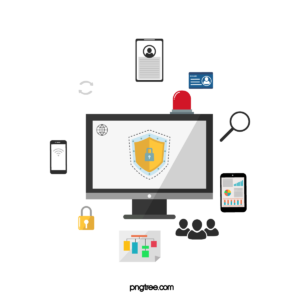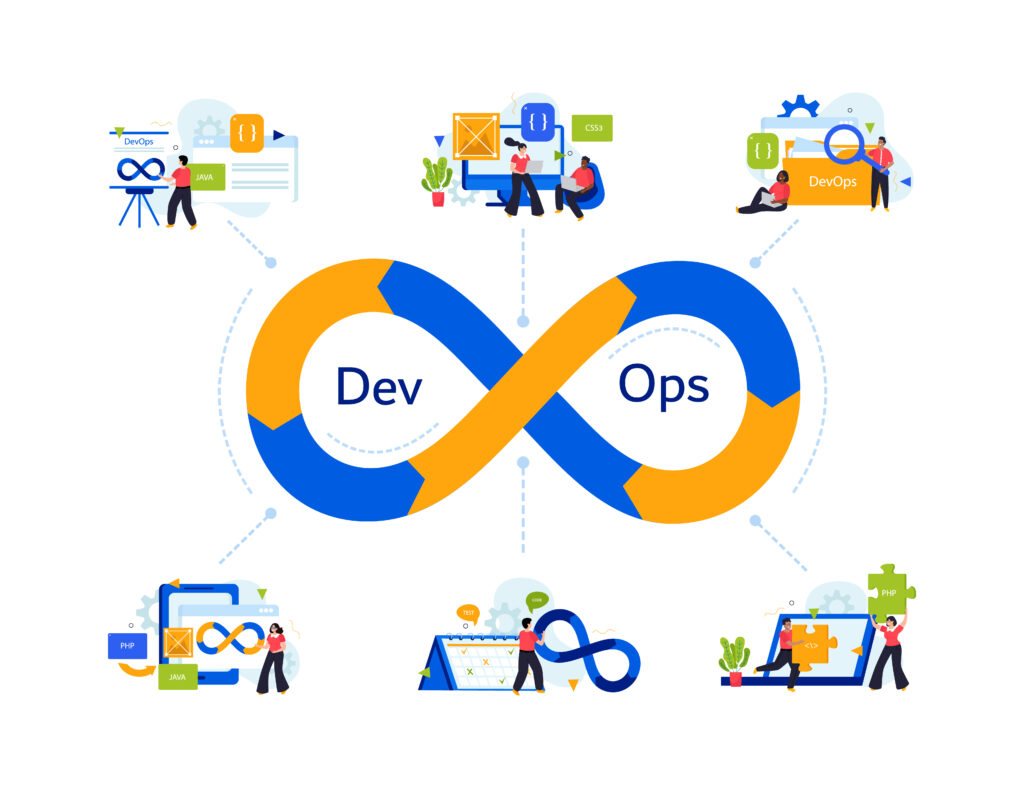DevOps best practices involve automating processes and fostering collaboration between development and operations teams. By implementing continuous integration and continuous delivery (CI/CD) pipelines, teams can streamline and accelerate software development.

Organizations should also prioritize infrastructure as code and monitoring to ensure efficient and reliable deployments. In the fast-paced world of software development, adopting DevOps best practices is essential for organizations to stay competitive and deliver high-quality products. By emphasizing automation, collaboration, and a culture of continuous improvement, teams can boost efficiency, reduce errors, and enhance overall productivity.
This comprehensive approach not only accelerates the software delivery process but also improves product quality and customer satisfaction. We will delve into the key DevOps best practices that organizations can leverage to achieve success in today’s dynamic tech landscape.
Automation
Automation is a crucial aspect of DevOps that streamlines processes to enhance efficiency.

Continuous Integration
Continuous Integration fosters collaboration among developers by merging code changes frequently.
Configuration Management
Configuration Management maintains consistency across systems through automated configuration updates.
Collaboration
Collaboration: Collaboration in DevOps leads to increased efficiency and better outcomes.
Cross-functional Teams
Cross-functional teams in DevOps bring together individuals from different departments to work towards a common goal.
- Boosts communication among team members.
- Integrates expertise from various disciplines.
Knowledge Sharing
Knowledge sharing is key to fostering a culture of learning and continuous improvement in DevOps.
- Encourages team members to share insights and best practices.
- Promotes a collaborative environment for problem-solving.
Monitoring
Monitoring is an essential aspect of practicing DevOps, ensuring that your applications and infrastructure are performing optimally and providing valuable insights into their health and stability. In this section, we will discuss two key areas of monitoring in DevOps: Performance Monitoring and Log Management.
Performance Monitoring
Effective performance monitoring is crucial for understanding how your applications are performing and identifying potential bottlenecks and performance issues. By implementing robust performance monitoring practices, you can proactively catch and resolve any performance-related problems before they impact your users.

Here are some best practices for performance monitoring:
- Set Performance Benchmarks: Establishing performance benchmarks helps you determine the expected performance standards for your applications and infrastructure.
- Monitor Response Times: Measure the response times for critical operations to ensure they are within acceptable limits.
- Track Resource Usage: Monitor the utilization of CPU, memory, disk space, and other resources to identify potential bottlenecks.
- Alerting and Notifications: Configure alerts and notifications to promptly identify and respond to any performance issues.
Log Management
Logs are a valuable source of information for troubleshooting and understanding the behavior of your applications and infrastructure. Effective log management practices enable you to analyze and interpret logs efficiently, ensuring that you can quickly identify and resolve any issues that arise.
Here are some best practices for log management:
- Centralized Log Storage: Centralize your logs in a secure and scalable log storage solution for easy access and analysis.
- Implement Log Rotation: Configure log rotation to manage log file sizes and prevent them from consuming excessive disk space.
- Monitor Log Events: Implement real-time log monitoring to detect any unusual or critical events in your applications and infrastructure.
- Log Aggregation and Analysis: Leverage log aggregation and analysis tools to gain insights from the vast amount of log data generated.
Agile Methodology
Agile Methodology:
Agile methodology is a dynamic approach that emphasizes flexibility and adaptability. It encourages collaboration and iterative development through smaller, incremental changes. This methodology promotes faster delivery and the ability to address evolving requirements effectively. Implementing the Agile methodology in DevOps practices leads to improved efficiency, quality, and customer satisfaction.
Sprint Planning
Sprint planning is a crucial phase in Agile methodology, where the team identifies and prioritizes the tasks to be accomplished during the upcoming sprint. It involves breaking down the project requirements into manageable tasks and estimating the effort required for each task. With clear objectives and timelines, sprint planning sets the stage for focused and efficient development cycles.
Iterative Development
Iterative development, a core principle of Agile methodology, involves breaking down the project into small, manageable increments. This allows for continuous feedback and improvement throughout the development cycle. By iterating on working software, teams can quickly respond to changes and deliver incremental value to users, leading to better outcomes and satisfied stakeholders.
Infrastructure As Code
Infrastructure as Code (IaC) is a fundamental concept in DevOps that involves managing and provisioning computing infrastructure through machine-readable scripts and declarative definitions, rather than physical hardware configuration or interactive configuration tools.
Version Control
Version control is vital in IaC as it enables teams to track changes, collaborate seamlessly, and rollback to previous working states if necessary. Utilizing version control systems such as Git provides transparency and accountability in managing infrastructure configurations.
Provisioning
Provisioning of infrastructure in an automated and consistent manner is a key aspect of IaC. By defining infrastructure through code, provisioning becomes predictable and reproducible, reducing the chance of configuration drift and human error.
Security
When it comes to DevOps best practices, security is a paramount concern. In today’s digital landscape, organizations need to prioritize the protection of their infrastructure, applications, and data from potential threats. With automation of security policies and continuous security testing, businesses can establish a robust security framework that ensures the safety and integrity of their systems.

Automation Of Security Policies
The automation of security policies is a game-changer in the world of DevOps. Instead of manually implementing security measures, organizations can use automated tools and processes to enforce consistent security policies across their entire infrastructure.

With automation, security policies can be defined and applied at various stages of the development and deployment lifecycle. This includes measures such as authentication and access control, encryption, and vulnerability scans, among others.
| Benefits of Automation of Security Policies |
|---|
| Avoid human error in implementing security measures. |
| Ensure consistent application of security policies across the infrastructure. |
| Save time and effort by automating repetitive security tasks. |
| Enhanced visibility and control over security measures. |
Continuous Security Testing
Continuous security testing is a vital component of a strong security posture. It involves ongoing testing and analysis of applications and infrastructure for vulnerabilities and weaknesses. By regularly assessing the security of systems, organizations can identify and mitigate potential risks in real-time.

Continuous security testing encompasses various techniques, such as penetration testing, vulnerability scanning, and code analysis. These methods help uncover vulnerabilities, misconfigurations, and other security flaws that could be exploited by malicious actors.
- Key Benefits of Continuous Security Testing:
- Identify and address security vulnerabilities proactively.
- Mitigate the risk of potential breaches or data leaks.
- Facilitate compliance with industry regulations and standards.
- Ensure the ongoing integrity and reliability of systems.
- Common Continuous Security Testing Tools:
By implementing these DevOps best practices, organizations can strengthen their security posture and better protect their applications and data. Automation of security policies and continuous security testing ensure that security measures are consistently enforced and vulnerabilities are promptly addressed.
Continuous Deployment
In the realm of DevOps best practices, Continuous Deployment stands out as a pivotal approach to consistently deliver software updates.
Feature Flags
Feature flags are essential tools in the Continuous Deployment pipeline to enable/disable specific features in real-time.
Rollback Strategies
Robust rollback strategies are critical in Continuous Deployment to swiftly revert to a stable version in case of issues.
Containerization
Containerization is a crucial aspect of DevOps, allowing for efficient deployment and scaling of applications.
Docker Integration
Docker Integration simplifies the process of packaging applications into containers for portability and consistency.

Kubernetes Orchestration
Kubernetes Orchestration automates the management of containerized applications, ensuring seamless scaling and deployment.
Frequently Asked Questions On Devops Best Practices
What Are The Key Benefits Of Devops Practices?
DevOps practices help in improving deployment frequency, reducing failure rates, and achieving faster time to market. By fostering collaboration and automation, DevOps also enhances overall team efficiency and productivity.
How Can Devops Help In Reducing Software Development Errors?
By implementing continuous code deployment and automated testing, DevOps minimizes human errors and reduces the likelihood of bugs or issues slipping through the cracks during the development process.
What Are The Main Principles Of Devops Culture?
DevOps culture emphasizes collaboration, communication, integration, and automation across development, operations, and quality assurance teams. This cultural shift aims to improve the efficiency and effectiveness of software development and deployment processes.

Incorporating DevOps best practices can significantly enhance the efficiency and productivity of any organization. By fostering collaboration between development and operations teams, leveraging automation, and promoting continuous integration and delivery, businesses can streamline their processes and accelerate time-to-market. Additionally, implementing proper monitoring and feedback systems allows for prompt identification and resolution of potential issues.
Embracing these principles will undoubtedly empower companies to stay competitive and achieve success in the ever-evolving tech landscape.
